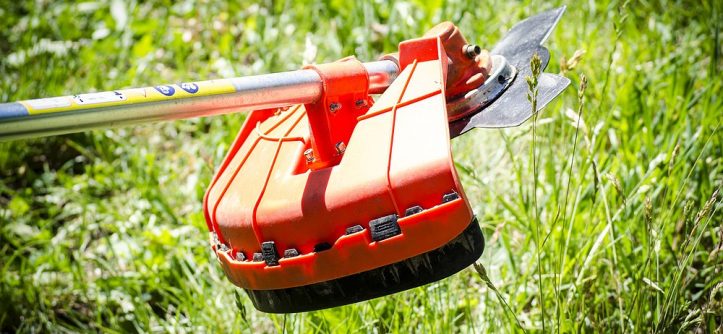
Although string trimmers are typically not as problematic as other lawn trimming equipment, it is still vital to understand the common problems and what to do in case you encounter them. This guide showcases some of the common string trimmer issues and possible troubleshooting.
-
String Trimmer Head Problems
For a string trimmer, the head is what does the actual cutting, as this is where you have the nylon line that chops down the grass. Hence, given the abuse from the job, the trimmer head might develop issues at some point.
You can get string trimmers in two head types: bump and automatic feeder. The automatic ones rely on centrifugal force to advance the string. On the other hand, bump heads require the user to bump them on the ground for more of it to come out.
With both options, the most common head problem is the line failing to advance correctly. Sometimes the line can also feed inconsistently, making grass cutting harder for you.
What to Do: The best way to deal with the problem is to check whether the line is wound correctly, and in many instances, a visual inspection should reveal this. Additionally, make sure the line thickness is correct.
String trimmer lines come in different thicknesses, and manufacturers should indicate on the head which one works best for their products. Remember, if the line is too thick, it might not feed at all, while one that is too thin feeds a little too fast.
When you find that the issue is with a damaged string trimmer head or one of the internal components is worn or broken, it is better to replace the entire head. The string trimmer head is relatively easy to change, and for many models, you only have to remove the old one and pop the new one in place.
-
Starting Problems
It can be frustrating trying to start a string trimmer that will not just power up no matter what you do. Starting problems are more common with the 2-cycle gas-powered models that use a combination of gas and oil.
In most instances, the problem’s source is often a bad fuel fixture. Typically, the string trimmers will use either a 40:1 or 50:1 gas to oil mixture. If you get the mixture wrong, you end up with faulty spark plugs and a burnt-out motor, which makes starting impossible.
Besides the gas fuel mixture, sometimes the starting problems can result from using gasoline that is past its shelf life or a dirty air filter and carburetor.
What to Do: The first step when you have starting problems is always to check your fuel. Besides checking that the ratio is correct, you have to ensure the gasoline is fresh, given it starts breaking down in as little as 30 days.
If changing the fuel does not solve the issue, you have to check the carburetor to make sure it is clean as debris can clog its tiny passages. Additionally, check the spark plugs and replace worn-out ones. Also, remember to clean or replace the air filter.
-
Running Problems
Sometimes the string trimmer can start but have a myriad of running problems. These issues range from running inconsistently or dying out prematurely. A weak spark plug is a leading source of running problems.
Like starting issues, using old fuel or an incorrect gas and oil mixture can also lead to running problems. In other cases, running problems result from the wear and tear of different engine components.
What to Do: When you notice your string trimmer has running issues, the first thing to do is emptying the tank and adding fresh fuel. Before adding the fresh fuel, checking the ratio and mixing up a new batch is an even better idea.
Also, you can make adjustments to the set screws on the string trimmer to ensure you have the correct setting for idle or high-speed operation. If all this does not solve your running problems, you should service the weed whacker to check for things like damaged or worn out parts and replace them.
-
Electric Types
The three sections above primarily address issues that come with the gas-powered string trimmers, but it is important to note even the electric types can also have problems. Despite being almost maintenance-free, like any other tool, you might still need to troubleshoot your electric trimmer at some point.
Some common electric string trimmer issues include failure of components like the motor, switch, or even power cord and abrupt power cuts.
What to Do: If you are using a corded electric string trimmer, you have to make sure it does not share an outlet with several other appliances to minimize the likelihood of a power trip.
Furthermore, check and service different components like the switches regularly to keep them in good working condition. For those with battery-powered models, charging the battery several hours before the job, getting an extra battery, and investing in a fast charger should solve most of your problems.
Conclusion
No matter what string trimmer type or model you use, you might run into problems at some point. These issues range from trimmer head problems to failure to start.
However, most are pretty easy to fix, and the important thing is to know how to do it. That said, always making sure you use the correct fuel mix and giving the weed whacker regular servicing should help prevent most issues.

